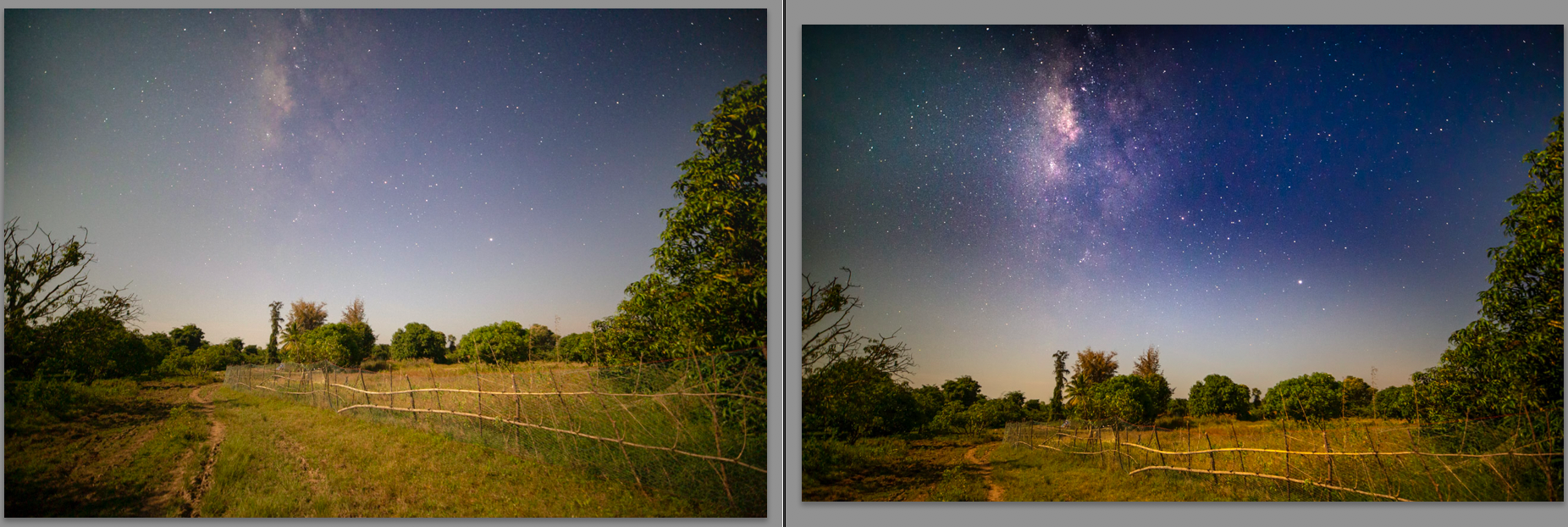A very common question some people ask me after seeing my photos is – “how did you get these colours? Why can’t I get the same? Do you Photoshop them (referring to the popular image editing program, Adobe Photoshop)?” In all likelihood, they want to know if the image they see is straight out of the camera, or if it has been ‘tweaked’ to look pretty.
The most simple answer to this question is – yes. I process every image individually. I enhance colours, sharpen edges, adjust contrast, and crop the frame – all in an effort to make the image look good and as close as possible to what I saw. The reaction to this answer generally is – “ah, that explains why I don’t get photographs as good as yours”. Or, “you are more of a photoshopper than a photographer” (usually said with a sneer).
I am fine with both responses. Because both are true to an extent.
From a technical standpoint, no camera can give a photograph so wonderful that it doesn’t need post-processing. Especially when the camera is set to capture in a format called RAW. Those who discredit an edited image should probably take the time to know that there is always more to a good image than just Photoshop. A good photograph is a result of right shooting techniques, choice of filters, lenses and lighting conditions. Photographers spend a great deal of time just waiting for the right light. They also tend to intricately plan their shoot to make different elements come together.

 If you like what you see, read on to understand the truth about five post processing myths.
If you like what you see, read on to understand the truth about five post processing myths.
Myth 1: The Camera Captures What your Eyes See.
Cameras are very imperfect devices. They can never match the sophistication of the human eye but most people don’t know that. This is one reason why non-photographers look down on Photoshop. They believe that a camera can capture what they can see. If you are of the same opinion, read up on this article that explains in technical terms why a camera does not see the same way our eyes do.
Myth 2: Processing a Photo is Unethical
The ethics of processing needs to be understood based on what was done to the photo. Digital artists use Photoshop to add artificial elements and create an image that looks too good to be true. No doubt, such things are widely done (and requires talent to be done well). Digital art tends to be shared on the same platform as digital photos. Many such digitally manipulated images would have at some time landed in your mailbox, forcing you to be suspicious of anything too good to be true.
Because the distinction between digital art and digital photography is thin, it is not uncommon in today’s digital age to question the credibility of a photo. But to think that Photoshopped images are all unethical amounts to ignorance of the nuances of photography. Perhaps, one can only think of photographers masquerading their digital art as photos, and digital artists doing vice versa, as unethical.
Myth 3: Film Photographers did not Process their Photos.
Traditional film photography was no doubt more hard work and technically complicated than modern day digital photography, but that does not mean that today’s photographs are not worthy of the effort that it takes to create them. Film photographers didn’t have the convenience of doing it non-destructively using a computer, nor did they have the kind of options that we have today. Film shooters used a lot of manual enhancement techniques – a fact that lay-people don’t know because they used to give their film rolls to labs who did the processing for them. In case you are interested, here is a video of how Ansel Adams processed film. Processing a photograph after it is captured on film or digital is not a new practice.
Some photographers like to declare that they are not in the habit of processing their photos, and use that as bragging rights. If you thought that the photo that came out of your digital camera is unprocessed, you are wrong. The camera does a whole lot of processing, which when photographers shoot RAW, choose to do themselves.
Myth 4: Photoshop is Magic.
Post processing requires skill, patience, and creativity. Just like how a good camera does not automatically take good photographs, Photoshop does not automatically make photos look awesome. It takes years to master Photoshop. Adobe, the company that makes Photoshop, also offers certifications in this area.
Unfortunately, the goal of post processing is very diluted in today’s times. Ideally, you don’t post-process a photo by randomly pushing sliders, but it could be just as easy as that. In these times when digital cameras have become so very cheap, anyone can chance upon an award winning capture just by shooting many frames or applying preset filters in not-so-sophisticated image editing software.
The true test of a technically good photograph would be in print, which unfortunately not many are investing in on these days. Part of the problem lies in the hype that surrounds photography on social media. All the focus on ‘Likes’ and ‘Shares’ has lead to people forgetting how to critically evaluate a photo. Personally, I keep archival printing as the end goal of my processing routines. Every step in the workflow is deliberate, and I like to evaluate my photos on print.
Myth 5: Processing Makes Anything and Everything Look Good.
Post processing follows a fundamental law of computing – garbage in garbage out. If you have a bad image to start with, you cannot make it look great in post. Photographers do not generally go about adding stuff that did not already exist in the scene. They also don’t change colors without a reason, unlike how instagram filters do. More often not, photographers only bring out colors that already existed in the scene, but which the camera failed to capture. So if you have a poor quality photo to start with, there is not much you can do in post processing. Sure, you can distastefully jazz it up and grab eyeballs, but that is not the kind of photography we are talking about here.


